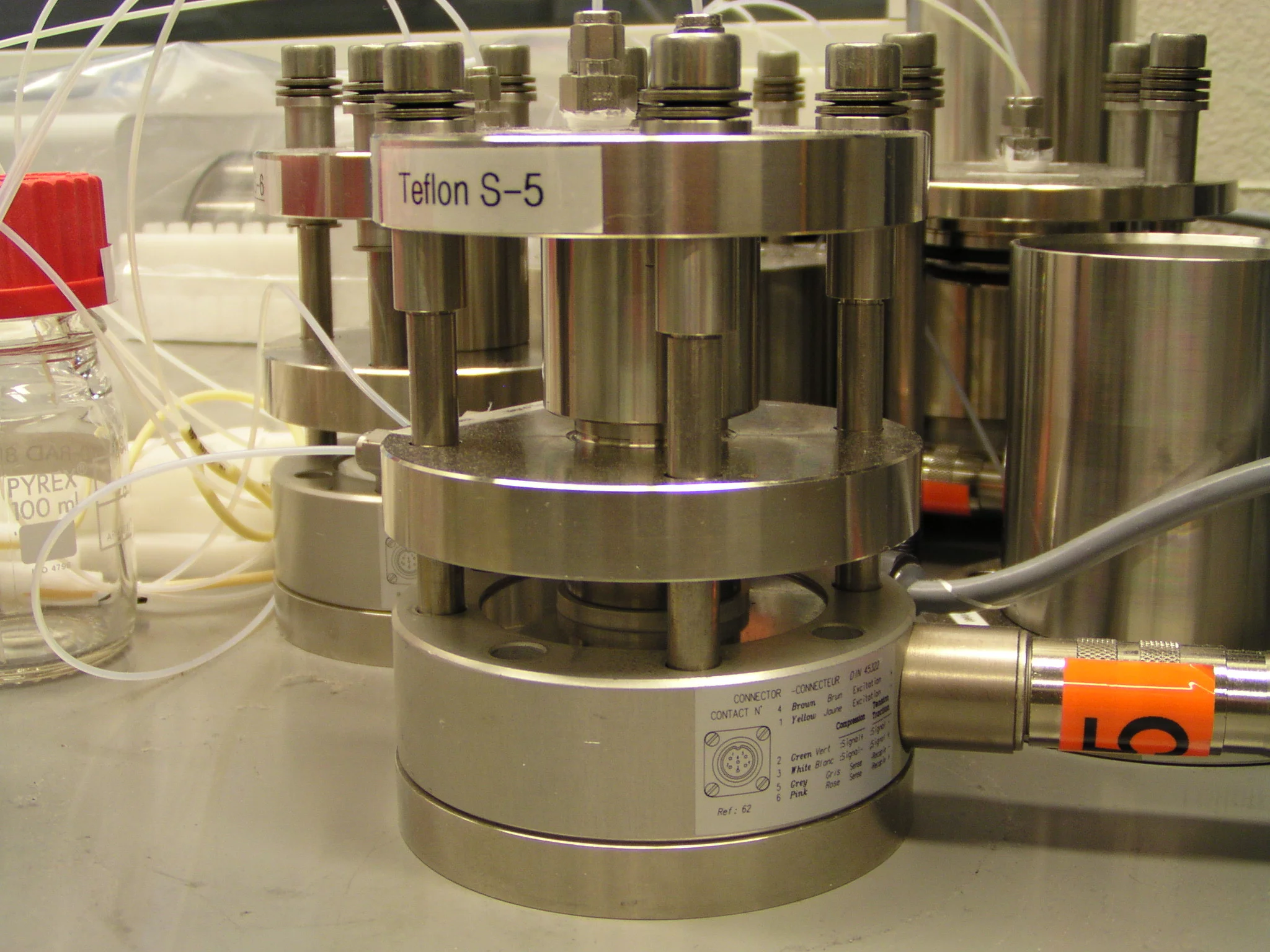In Switzerland, the favoured host rocks for radioactive waste repositories are all low porosity clay-rich sedimentary rock formations (e.g. Opalinus Clay, Brauner Dogger). Because of the high bulk density of these rocks (2.4 – 2.6 kg/m3), pore sizes are in the nanometer range, making water flow very low. Molecular diffusion and surface adsorption are the main processes governing radionuclide transport in such clay stones.
Within the Laboratory for Waste Management (LES) research is being performed on the diffusion and retention of radionuclides in clays and clay stones. Different laboratory-scale techniques such as through-diffusion, in-diffusion combined with profile analysis, batch sorption, and synchrotron-based X-ray techniques (micro-absorption spectroscopy, micro-fluorescence and micro-tomography) are used to study diffusion and sorption processes, and to measure diffusion and sorption coefficients for safety analysis. Moreover, to verify the results obtained in the laboratory, LES is also involved in large-scale migration experiments in the Mont Terri underground laboratory.
The final aim of this research is improving the mechanistic understanding and developing models for diffusion and sorption processes of cations, anions and neutral species in compacted clay materials. This knowledge is indispensable for a reliable evaluation of the long-term migration and retention behaviour of radionuclides in technical barrier systems (e.g. bentonite) and in argillaceous host rocks.



